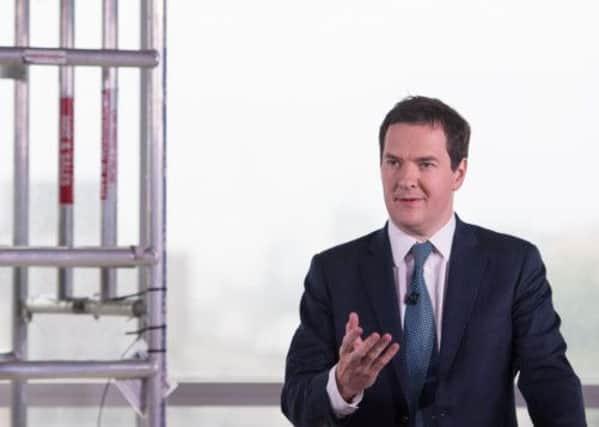Leaders: Banks on a better financial footing at long last | Stay home for thrilling adventure


Only 6 per cent of the total number of shares in the bank (15.5 per cent of the government’s holding) are to be sold, but it is a start.
The buyers will not be members of the public, but big financial institutions such as pension funds. It is reckoned the sale will raise about £3.3 billion which –even after the fees to be collected by the big investment banks that will process the sale are deducted – should yield a nominal profit.
Advertisement
Hide AdAdvertisement
Hide AdWhen the government bail-out rescued Lloyds in 2008, the average price paid per share was 73.6p and the indications are that the sale price will be a just a little below yesterday’s market closing price of 77.36p.
George Osborne, the Chancellor, reckons that – because of fees the bank has paid to the government in the interim for such services as the asset guarantee scheme – this means that the break-even price is 61p.
Others might argue that inflation narrows the apparent gap and, therefore, it is debatable whether the taxpayer really is going to make a profit. But even if it turns out in reality to be around about a break-even sale, that is a better outcome than seemed realistic for some time after the bail-out.
Think back to that time: the predictions were cataclysmic in terms of whether the taxpayer would ever get the money back.
The sale should have some welcome benefits for Mr Osborne. It may mean that this year’s public spending deficit will undershoot the £120bn forecast by the Office for Budget Responsibility and, if so, it will enable him to claim that the deficit, which peaked at £121bn in 2011-12 and fell only slightly last year, is now firmly on a downward track.
One of the promises surrounding the sale is that there will be no more for at least 90 days, which still gives three months before the end of the financial year for another tranche of shares to be sold, giving him even more room for deficit-reduction.
That will bring him obvious political benefits, seeming to bolster his claim that austerity is working. And if the side-effect of the sale announcement is to increase confidence in the economic outlook, encouraging growth to become yet more firm, his position will become even stronger.
There is, sadly, no similar immediate prospect of the Royal Bank of Scotland holding being sold because of the legal actions that have yet to come against RBS over the allegations that shareholders were misled in the pre-bailout rights issue.
Advertisement
Hide AdAdvertisement
Hide AdBut the Lloyds sale, assuming it proceeds as expected, is evidence that British banking is a bit healthier and has reached a much more stable position. We are not at the end of this story by a long way and any privatisation of RBS should not be rushed, but we are moving, at last, in the right direction.
Stay at home for thrilling adventure
Think of adventure and you might imagine trekking in the Himalayas, sailing the Atlantic, or going on an African safari. Adventure in Scotland, land of coach parties trundling round castles, eating shortbread, while buying tartan knick-knacks? Hardly.
Actually, you would be well out of date. A new adventure travel book from Lonely Planet, which lists 1,000 ways to thrill your socks off, proclaims that 20 of its top 100 blood-stirring activities are to be found in Scotland.
These include things we might think of as relatively routine, such as taking the world’s shortest scheduled flight in Orkney or the flight that lands on a beach in Barra. Excellent, the airlines and islands involved could do with the extra trade that may be generated by this guidebook. Certainly, Edinburgh would not say no if a few more folk want to climb Arthur’s Seat, judged to be one of the world’s best city hikes.
However, the book does list things that are decidedly risky, such as sea swimming across the Corryvreckan whirlpool – only during the one-hour period when the tide turns and the whirlpool isn’t active. Those who fear this is irresponsible should relax. The book advises that it requires a lot of planning and equipment, including accompanying support boats. And people are doing it anyway, including actor Robson Green, who tried it for a TV series on wild swimming.
So, Scotland, Land of Adventure, eh. It may even stimulate a few Scots to leap off their couches and try the underwater swims of the Faerie Pool in Glen Brittle, Skye. And the book didn’t even list the most demanding and gruelling adventure of all – avoiding indyref campaigners on both sides of the argument.